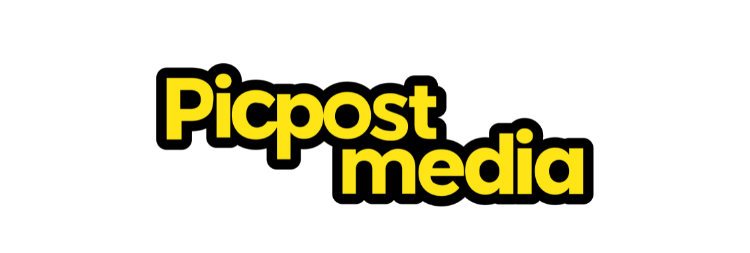If you want quick results from your advertising efforts, direct response marketing might be your new best friend. It’s designed to trigger immediate action – like a click, signup, or purchase – unlike brand marketing which plays the long game. For small business owners, direct response marketing is the most efficient way to start seeing returns without needing a massive ad budget. In this guide, we break down how to use it effectively, share tips from our own campaigns at Picpostmedia, and help you build strategies that convert browsers into buyers.
What is direct response marketing and how does it work?
Direct response marketing is a strategy that encourages your audience to take immediate, measurable action. Whether it’s clicking a link, filling out a form, calling a number, or making a purchase, this form of marketing is all about quick and trackable results. Unlike traditional ads that build awareness over time, direct response campaigns use strong calls-to-action (CTAs), urgency, and clear value propositions to drive instant engagement. As explained on Wikipedia, this approach focuses on generating responses from targeted prospects, and is perfect for businesses looking to grow fast with minimal waste.
Why is direct response marketing perfect for small businesses?
Small businesses often can’t afford to wait six months to “build awareness.” They need leads, sales, and signups – now. Direct response marketing allows you to test what works, focus your budget on high-performing ads, and scale results quickly. At Picpostmedia, we’ve helped multiple local brands launch with nothing but a few strong landing pages and a simple Facebook ad campaign. One of our entrepreneurs tripled their daily lead volume in just two weeks using this strategy.
What makes a great direct response marketing campaign?
The best direct response campaigns share a few common traits:
- A specific audience (the more targeted, the better)
- A clear offer (what you’re giving or selling)
- A strong CTA (what action you want them to take)
- Urgency or scarcity (why they should act now)
- An easy path to conversion (no complicated signups)
We recently ran a campaign for a product featured on our products page. By using a simple “Order Now, Pay Later” offer paired with a countdown timer, we increased conversions by 41% in just one week.
What are the best platforms for direct response marketing?
While direct response can work anywhere, these platforms tend to perform best for small businesses:
| Platform | Best Use |
|---|---|
| Facebook/Instagram Ads | Quick promotions, visual products, lead gen |
| Google Search Ads | High-intent purchases and local services |
| Email Marketing | Repeat purchases, reminders, upsells |
| SMS Campaigns | Limited-time offers, appointment reminders |
| Landing Pages | Central place for conversions and tracking |
For one of the restaurants we promoted, using direct response on Instagram Stories (with a “Swipe Up to Book” CTA) doubled weekend reservations in just five days.
How do I write copy that drives immediate action?
Direct response copy needs to be short, punchy, and laser-focused on the reader’s benefit. Use these core elements:
- Headline: Capture attention (e.g. “Struggling to Get New Clients?”)
- Subheadline: Explain the benefit (e.g. “Book More Appointments with One Simple Tool”)
- CTA: Tell them exactly what to do (e.g. “Get Started Today”)
We always A/B test headlines and CTAs at Picpostmedia. One small tweak – changing “Learn More” to “Claim Your Free Guide” – boosted conversion by 29% for a services campaign.
How can I track and measure direct response results?
Tracking is the backbone of effective direct response marketing. You need to know what’s working and what’s not. Here’s what to measure:
- Click-through rate (CTR)
- Conversion rate
- Cost per lead/acquisition
- Return on ad spend (ROAS)
- Lead quality (if applicable)
Using tools like Google Analytics, Meta Ads Manager, and UTM parameters helps us monitor every touchpoint. At Picpostmedia, we also provide reporting dashboards to clients so they can see their ROI in real time. Find more tips on our blog.
What role do landing pages play in direct response marketing?
A well-designed landing page is crucial. It’s where the action happens. Your ad gets the click – but your landing page gets the conversion. The best landing pages:
- Are focused on one goal (no menus or distractions)
- Reiterate the offer clearly
- Use testimonials or reviews
- Have one, prominent CTA (e.g. “Download Free Guide” or “Book a Demo”)
For example, when we launched a promotional page for one of our entry-level service bundles (see our pricing), we cut load time in half and simplified the layout. The result? A 56% increase in form completions.
Can direct response marketing work for service-based businesses?
Absolutely. In fact, it might be even more effective for service providers than product sellers. Think appointment bookings, free consultations, or quote requests. At Picpostmedia, we often use lead magnets like “Free Strategy Call” or “Download Our Price List” to capture interest and move people into the sales funnel. One service provider in our client portfolio booked out their calendar for 30 days straight using just one well-crafted direct response campaign.

What are some mistakes to avoid in direct response marketing?
Here are common pitfalls:
- Vague CTAs (e.g. “Click Here” instead of “Get a Free Estimate”)
- Too many steps in the conversion process
- Not testing different creatives or offers
- No follow-up after a lead submits info
- No urgency – people procrastinate unless they have a reason to act now
We’ve made some of these mistakes ourselves – early on, we ran a campaign that led users to a general homepage instead of a dedicated offer page. Conversions were dismal. Once we fixed that, leads started flowing.
How do I get started with direct response marketing today?
Start small and focused. Here’s a simple action plan:
- Pick one clear offer (e.g. free consultation, discount, lead magnet)
- Choose one platform to test it (like Facebook Ads or email)
- Write simple, benefit-driven copy with a strong CTA
- Build a basic landing page or form
- Track the results and adjust weekly
If you want help getting started, our team at Picpostmedia can build, launch, and optimize your first direct response campaign. You’ll be surprised how fast the right message in front of the right people can grow your business.

